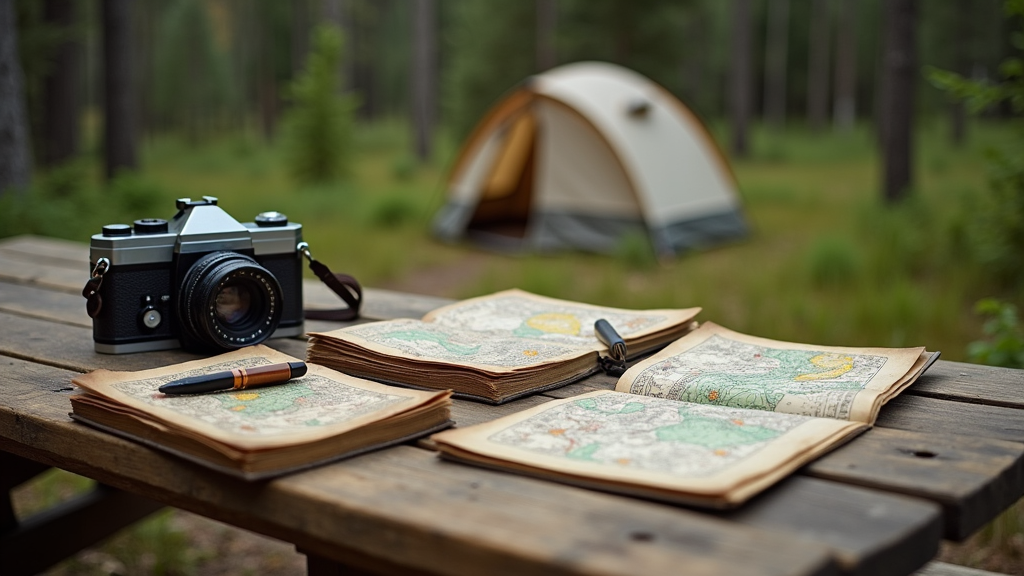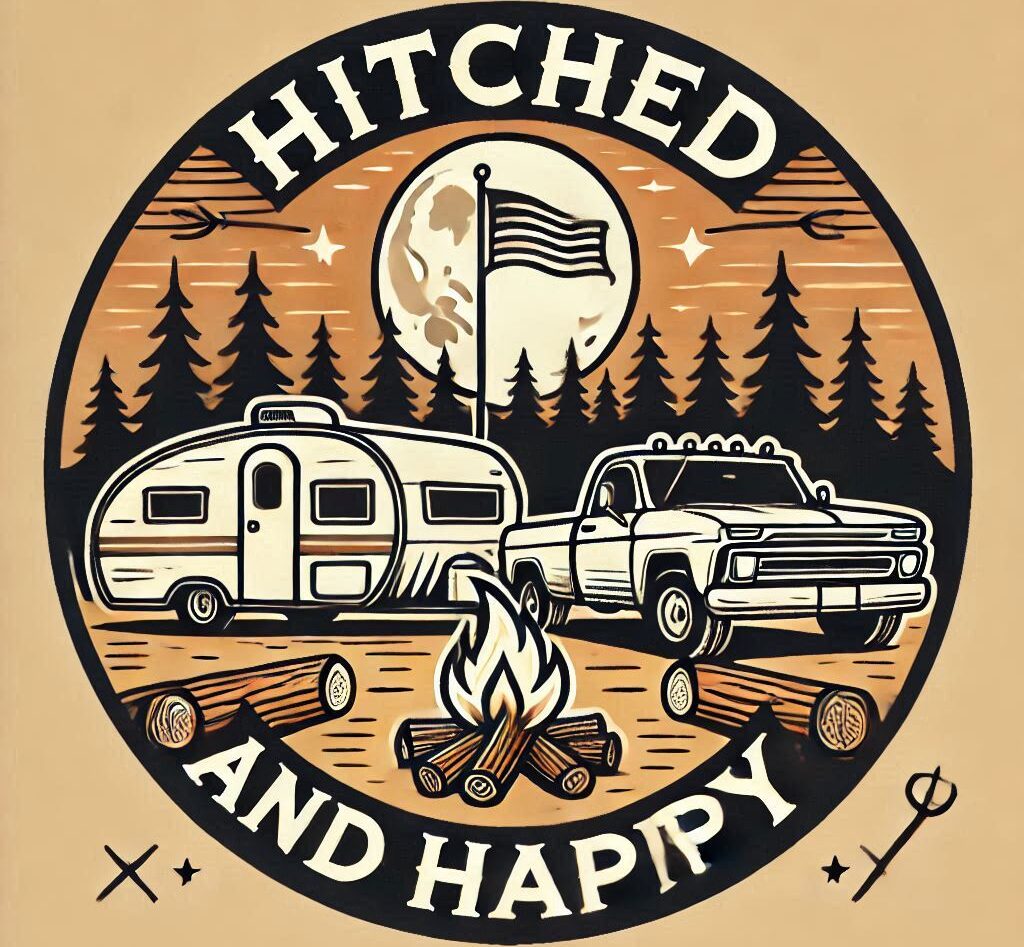Camping adventures create some pretty awesome memories. From those early morning hikes to unplanned campfire stories, every trip is packed with moments I never want to forget. Over time, I’ve found that actually documenting these trips helps keep their spirit alive long after I’ve packed up the tent and shaken the dirt out of my shoes. Whether you’re a casual camper or you spend half your summer under the stars, recording your adventures can be both fun and super rewarding.

Why Document Your Camping Adventures?
Documenting my camping trips feels a bit like collecting souvenirs, but it ends up being so much more meaningful. Each entry in my journal, every photo, or scrap of map marks a story that I can share. More than just fun, keeping track of these moments helps shape family traditions, helps fine-tune my practical skills, and even inspires friends or strangers who stumble across my old trip notes online.
I’ve sometimes looked back on a rainy day and remembered the problem solving from a muddy hike or laughed at my hilarious attempts at cooking over a fire. Old logs turn into guides for new adventures and help keep the stories alive for future generations. Sharing my camping stories connects me to the natural world and to a community of campers who swap advice, gear tips, and favorite spots.
Getting Started with Camping Documentation
Building the habit of documenting my camping adventures didn’t happen overnight. It helps to break the process into steps that fit my style. For some, jotting down quick notes after each hike is enough, while for others, recording detailed logs or even creating digital stories is more exciting.
- Handwritten Journals: Classic and very personal. I carry a small weatherproof notebook and a pencil (because pens love to quit in the cold and damp). I jot down the date, weather, who I traveled with, where we camped, highlights of the day, and anything funny or unexpected that happened.
- Photography: Snapping photos is an easy way to capture the vibe of a trip. I make sure to get shots of landscapes, friends, campsite layouts, and little details like cool mushrooms or camp gadgets that worked well.
- Maps and Sketches: Sometimes I add quick sketches or highlight our trail on a map. It’s a fun way to get creative and helps me remember exactly where that hidden waterfall was.
- Voice Notes: When I’m too tired to write, I record some quick audio notes on my phone. These are easy to transcribe or listen back to later.
Quick Guide to Creating a Camping Adventure Log
Keeping a camping log doesn’t need to be complicated. Here’s a step-by-step approach that’s worked for me:
- Pick Your Recording Method: Decide if you want to keep things old school with a journal, go digital with a blog or app, or mix a few styles together.
- Set a Routine: I find it super helpful to write or record something at the end of each day while the details are fresh. Even just five minutes makes a big difference.
- Include Key Details: Start each entry with the basics: date, location, weather, and fellow campers. Add highlights, challenges, and what you learned or would do differently next time.
- Collect Extras: I like sticking in receipts, trail passes, or even little sketches of birds I saw. It makes the log more colorful and personal.
- Reflect: After getting home, I flip through my notes and add a final reflection: what stood out most, the best food hack, or a favorite photo.
This simple system helps turn scattered memories into a story I can return to, share, or even build into future camping goals.
Things You Might Want to Think About Before Starting Your Documentation Adventure
As with any new habit, documenting camping trips comes with a few things to keep in mind. Getting these sorted early makes the whole process smoother and much more enjoyable:
- Weatherproofing Your Gear: Since camping often involves unpredictable weather, I use a weatherproof notebook or a simple ziplock bag for digital devices to keep things dry.
- Backup and Storage: For digital logs and photos, I back everything up at home. Losing months’ worth of trip notes or cool photos to a busted phone is always a bummer.
- Privacy: While sharing stories online is fun, I’m careful about posting details that could compromise the privacy or safety of myself, friends, or future trip plans.
- Keeping It Manageable: Document as much as feels right for you. Some people thrive on detailed logs, others are happy snapping a couple of daily photos and noting the high points.
Weatherproofing
Camping is just as likely to see rain and mud as sunshine. I started out with regular notebooks, but quickly realized that adventure proof journals save headaches. There’s a reason why field biologists swear by waterproof notebooks and pencils. For phones or cameras, simple waterproof cases or bags work well for most people.
Backup and Storage
All it takes is one lost phone or soggy notebook to set you back. If you’re logging digitally, a cloud service or backup drive at home keeps your stuff safe. Hard copies like printed photos or journals are nice to have too. Sometimes I print out a handful of my favorite photos for the scrapbook.
Privacy
Telling a good story doesn’t mean you have to share every detail online. I tend to leave out specific campsite locations or sensitive info when posting publicly. It helps keep wild places wild and protects my personal experiences.
Keeping It Manageable
Start simple, then add detail if you feel like it. When I’m on a trip where I want to unplug, I just jot down a single line at the end of the day or take one photo that sums it up. The goal is to remember, not overwhelm myself.
Getting these basics figured out means I can focus more on the fun and less on logistics, keeping the process enjoyable.
Advanced Tips and Fun Ideas for Camp Documentation
Once I got into the habit of documentation, I found a bunch of ways to get creative and keep the process inspiring:
Mix Media for a Richer Record: Try adding rubbings of tree bark, dried leaves, or even a camp recipe that turned out great. Mixing visuals, text, and other keepsakes turns a journal into a full on adventure book. You could even use patches or little collected objects to make the process more hands on and memorable.
Digital Storytelling: There are cool apps designed just for outdoor adventures. Apps like Gaia GPS or AllTrails let me add photos, waypoints, and notes directly to my route maps. This style is especially handy for sharing with friends or planning future trips. You can even sync up your camera’s GPS data for a detailed map of every photo and landmark.
Photo Essays or Mini Documentaries: Sometimes I put together a short video or blog post after a trip. Even a simple slideshow with captions tells the story in a way that friends and family can enjoy. Try sharing your top three lessons learned, or highlight your biggest surprise along the trail.
Being a bit creative with how I record things makes going back through old adventures even more special and gives me new ways to see each trip.
What Documentation Gear Should Campers Think About?
A little planning goes a long way with gear. Here’s what I’ve found useful:
- Durable Notebooks: I go with something waterproof and small enough to stash in my hiking pants or pack side pocket.
- Sturdy Pens and Pencils: Regular pencils work even when wet, and I keep a tiny pencil sharpener around too.
- Compact Camera or Smartphone: Most modern phones work just fine for photos. For longer trips, I add a power bank or solar charger to keep my devices running throughout the adventure.
- Map and Compass: Handy if I want to mark campsites or sketch out our route. Old school, but still super useful and fun for kids to use too.
- Plastic Zip Bags: Simple but effective for keeping logbooks or electronics safe from the elements.
Having these basics ready lets me enjoy the moment without stressing about tech problems or lost pages. Plus, they hardly take up any space in my pack, leaving more room for snacks or emergency layers.
Real World Examples: What’s Possible with Camping Documentation?
- Tracking Progress: I love comparing notes from my first rookie trip to recent adventures. I spot how my gear, cooking, or navigation skills have improved season by season.
- Building Traditions: My friends and I swap adventure logs, which has actually turned into an annual tradition. We laugh about last year’s marshmallow disaster or the epic thunderstorm that had us hiding in the car. It’s a small detail that strengthens our bonds.
- Inspiring Others: More than once, sharing snippets from my trip has inspired someone else to go camping or visit a new park. Even failed attempts or rookie mistakes make for relatable stories that encourage others to get into the wild.
FAQs About Documenting Camping Adventures
Question: How do I start documenting if I’ve never kept a journal before?
Answer: Start small. Grab a notebook or use your phone. Write one sentence about what stood out each day—a cool animal, a weather surprise, or a laugh around the fire. The habit builds over time and soon it’ll feel second nature.
Question: What if I forget to document during the trip?
Answer: Don’t sweat it. Add notes, photos, or thoughts as soon as you remember. Memory fades, but even a short after-trip summary works better than nothing.
Question: Any pro tips for sharing camping stories online?
Answer: Go light on personal details, use plenty of photos, and tag your favorite gear or locations. Always respect nature spots by not geotagging secret or fragile areas, which keeps wild places wild for others too.
Wrapping Up: Moving Forward with Your Camping Memories
Documenting camping adventures adds a new layer of fun to every trip. It’s as much about remembering the wild stuff (and the goof-ups) as about learning, growing, and finding inspiration for next time. Whether you like jotting in a muddy notebook or making slick digital maps, there’s no wrong way to keep your outdoor legacy alive. If you haven’t started yet, it’s never too late to begin. Grab a pencil, snap a photo, and let your next adventure leave a mark you’ll revisit for years to come.
